
































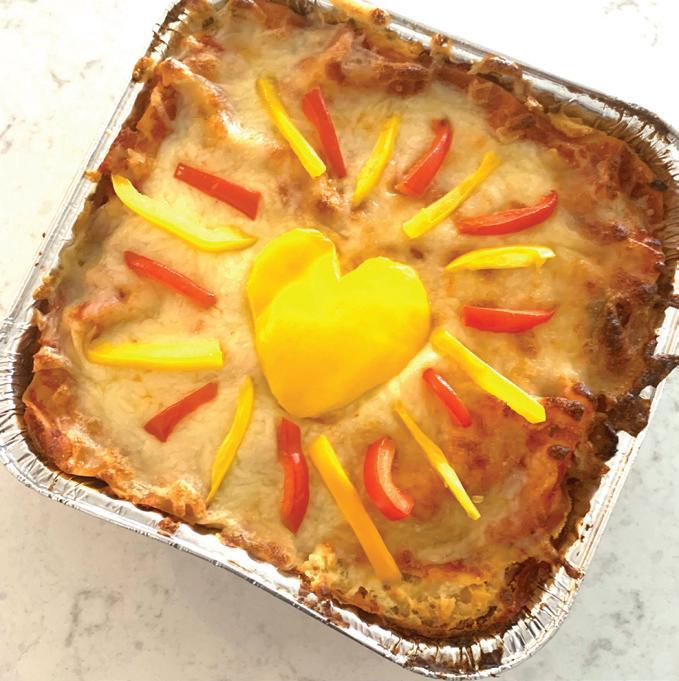

SOUTH LOUISIANA ELECTRIC COOPERATIVE ASSOCIATION
P.O. Box 4037, Houma, LA 70361
2028 Coteau Road, Hwy. 660, Houma, LA 70364
985-876-6880
Amelia branch office: 2903 Lake Palourde Road Morgan City, LA 70380
985-631-3605
www.sleca.com
Matthew Peters | General Manager
Brett Ledet | Assistant General Manager and Manager of Engineering
Shannon Soudelier | Operations Superintendent
Sandi Click | Manager of Finance
Jordy Bourg | Manager of Purchasing
Melissa Bonvillain | Manager of Member Services
BOARD OF DIRECTORS
David Luke | President | 985-855-4106
Roger Dale DeHart | Vice President | 985-860-1078
Larry Daigle | Secretary | 985-870-1121
Terry Trahan | Treasurer | 985-804-7335
Ivan Acosta | 985-397-3341
Trevor Benoit | 985-498-0602
Sandra Boudreaux | 985-859-3526
Abby Rivet LeBlanc | 985-665-6974
Betty Jean Doyle | 985-709-4396
Lloyd Gibson | Board Adviser | 985-209-3765
Volume 42, Issue 6
Louisiana Country (USPS 473-180) is published bimonthly by the Association of Louisiana Electric Co-ops Inc., 10725 Airline Highway, Baton Rouge, LA 70816, in partnership with Pioneer Utility Resources.
Annual subscriptions: Members $2.79. Nonmembers $5.
Postmaster: Send form 3579 to 10725 Airline Highway, Baton Rouge, LA 70816.
Periodicals postage paid at Baton Rouge, Louisiana 70821, and additional mailing offices.
As I look back on my 25 years with SLECA, I am humbled and grateful for having the honor to serve alongside such a dedicated team and to work with a board that keeps our members’ best interests at the heart of every decision.
Over the years, I’ve witnessed tremendous growth, faced challenges and celebrated successes—all made possible by the support of our membership and the hard work of our employees.
As we enter the holiday season, I want to take a moment to extend my warmest wishes to you and your families.

Thanksgiving reminds us of the importance of gratitude and community, and Christmas offers us the joy of togetherness and reflection. These holidays are a time to pause, appreciate the blessings in our lives and look forward to the opportunities of a new year.
With winter comes colder weather, and we want to remind everyone to keep safety in mind when it comes to electricity. Be cautious with space heaters—never leave them unattended and keep them away from flammable materials.
If you’re decorating for the holidays, check your lights and extension cords for wear and tear, and avoid overloading outlets. A little extra care can go a long way in keeping your family safe and your holidays bright.
Thank you again for allowing me to serve you for the past 25 years. It has truly been a privilege, and I look forward to continuing to work together to keep the lights on and our community strong. 211059001
From all of us at SLECA, we wish you a safe, joyful and blessed holiday season.

SLECA o ices wi be closed:
Jan. 1 in observance of New Year’s Day Dec. 25 in observance of Christmas N . 27-28 in observance of Thanksgiving
Did you know SLECA gives away cash just for reading Louisiana Country In each issue, four account numbers are randomly selected using a computer program and hidden in articles on SLECA’s pages (4, 5, 8, 17, 20 and 21).
If you see your account number, call SLECA and win $25 cash or have the money applied to your bill. If you are not reading Louisiana Country from cover to cover, you’re missing out on great articles and the chance to win money.

Aug. 11, 2025
Present were directors David Luke, president; Roger DeHart, vice president; Larry Daigle, secretary; Terry Trahan, treasurer; board members Ivan Acosta, Trevor Benoit, Sandra Boudreaux, Betty Jean Doyle and Abby LeBlanc; and Lloyd Gibson, adviser to the board.
Also attending were Matt Peters, general manager; and Ashley Ferrington, administrative assistant.
The board approved the minutes and summary of the July 7, 2025, regular board meeting. The Association of Louisiana Electric Cooperatives and 1803 Cooperative reports were also approved.
The financial report, approved by the board, highlighted interest earnings, cash on hand, a rate comparison showing South Louisiana Electric Cooperative Association having the most steady rates in the area, line loss, monthly kilowatt-hour sales, cumulative sales to date, cost of service, equity, times interest earned ratio, and electric and total revenue versus cost per kilowatt-hour.
Following an update on upcoming schools, meetings and events, Peters reported the following:
• SLECA has one of the steadiest rates in the area.
• NRECA 2025 Regional VIII Meeting is Monday, Oct. 27, through Wednesday, Oct. 29, in Round Rock, Texas.
• Amelia and Houma offices are closed Monday, Sept. 1, in observance of Labor Day. Crews will be on standby.
• SLECA is having its annual ACRE (now known as PAC) Campaign for the upcoming year.
• A monthly update on Hurricane Ida recovery was given to the board.
• SLECA received a check from Federated for the 2024 margin distribution.
The board approved the manager’s report and expenses, attorney’s fees, and safety report showing employees have worked 4,741,882 hours without a lost-time accident since December 1996. 71420001
The meeting was adjourned.
For copies of the minutes, contact SLECA, P.O. Box 4037, Houma, LA 70361, or call 985-876-6880 or 800-256-8826.
Light up your home this Christmas, and you could win a $100 cash prize. Entries are accepted through Dec. 8, 2025.
RULES:
1. The contest is open to South Louisiana Electric Cooperative Association residential members only.
2. SLECA directors, employees, retired employees or their families are not eligible to win.
3. Electricity is required. Outdoor lighting only.
4. Suggested themes: religious, contemporary or novelty.
5. Entries must be received at SLECA by Dec. 8. Judging is Dec. 9.
6. Winners are notified by telephone.
7. Last year’s winners are ineligible. 221142001
8. Prizes of $100 are awarded in each of SLECA’s nine member districts.
Name:
Address:
Account number:
Phone number:
* Complete this form and return it by Dec. 8 to SLECA, P.O. Box 4037, Houma, LA 70361, or call SLECA’s office in Houma at 985-876-6880 or 1-800-256-8826; or in Amelia at 985-631-3605 or 1-800-256-8836.

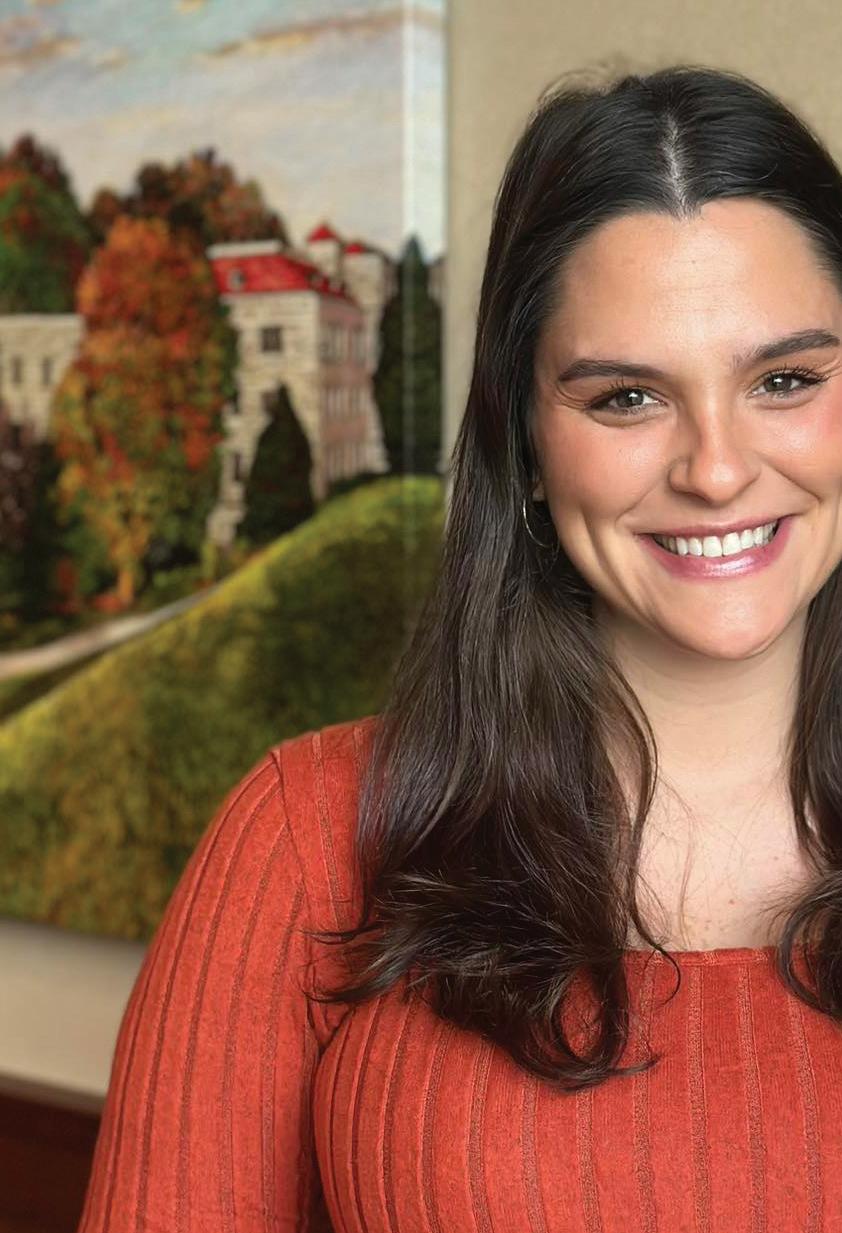




The Association of Louisiana Electric Cooperatives is proud to announce that Communications Coordinator Conley Bourgeois successfully earned the Certified Cooperative Communicator designation, a nationally recognized credential awarded by the National Rural Electric Cooperative Association.






The CCC program is an intensive professional development initiative that combines more than 110 hours of in-person and online coursework designed to strengthen the communications expertise of professionals who share the electric cooperative story. Participants complete coursework focused on strategic messaging, media relations, crisis communication, cooperative history and member engagement.













Certification is considered a hallmark of professional achievement in the electric cooperative network. To maintain their CCC, individuals must complete annual training to stay current on industry changes and best practices.






and legislative

Conley has served as ALEC’s communications coordinator for three years, supporting Louisiana’s cooperative network through storytelling, media outreach, social media strategy and member engagement. Her work helps keep co-op members informed about programs, legislative issues, community impact and emergency response—areas where clear and credible communication is essential.










By Miranda Boutelle
Q: How can I save in the kitchen during the most expensive time of the year?
A: The holiday season brings opportunities to enjoy meals with friends and family, leading to more time spent in the kitchen. Whether hosting a few or a crowd, consider making new energyefficiency traditions this year with these tips to manage your energy use.
Let’s start with cooking your meal. Your electric oven is typically the highestwattage appliance in the kitchen. Yet, people usually don’t turn their ovens on for long periods of time. Assuming an average oven wattage of 3,000 and an average cost of $0.16 per kilowatt-hour, according to the United States Energy Information Administration, running your oven costs 48 cents an hour.
Let’s say you use your oven for four hours to make a special meal. That’s less than $2 of electricity. While that may not seem like a big deal now, operating your oven for four hours every day is $700 a year.
Using smaller appliances instead of your oven can help you save. A slow cooker uses between 100 and 450 watts, which is significantly less than an electric oven at 2,000 to 5,000 watts. That means you can use a slow cooker for a longer period and still use less energy.
Opt for your microwave or toaster oven to reheat or cook smaller items. The microwave uses significantly less energy than the oven. A toaster oven uses about half the energy of a conventional oven, according to Energy Star.
Do not turn on your oven and leave the door open to heat your home. This can break your oven and be a safety hazard, especially with gas ovens that can cause carbon monoxide buildup.
When cooking on the stovetop, match

Before you start cooking on your stovetop, clean the burners to ensure the appliance heats evenly, which can help you save energy. Match pots to appropriately sized
the pot or pan size to the burner. Lids help your pots retain heat, which cooks food faster and wastes less heat. Keep your stovetop clean to ensure the appliance heats evenly.
If you’re looking to upgrade your stovetop, consider switching to an induction cooktop. It uses an electromagnetic field below the surface to heat pots and pans directly. This provides more precise heat, faster cook times and higher efficiency. It can also improve the air quality in your home compared to a gas cooktop.
In my experience, people like to gather in the kitchen during parties. To avoid overheating your guests in a room that has a hot oven, turn down your thermostat a few degrees before guests arrive.

Next, let’s look for refrigerator savings. The gaskets on your refrigerator doors should make a tight seal to keep in cold air. Make sure you clean and maintain them or replace them if necessary. Don’t let frost build up in the freezer, which can decrease efficiency and make your freezer work harder to maintain a balanced temperature. Wait until food cools before putting leftovers in the fridge. Putting hot food in the refrigerator results in more energy used to cool it down. Aim for about 30 minutes of cool time. Perishable food should be refrigerated within two hours after it is cooked, according to the United States Department of Agriculture.
Setting your refrigerator colder than needed wastes energy. The U.S. Department of Energy recommends 37 degrees for the refrigerator and 0 degrees for the freezer. Use an appliance thermometer to monitor the temperature. When it comes to cleanup, run full loads of dishes in the dishwasher, being careful not to block any moving parts. Use eco mode if your dishwasher has that setting. If you are in the market for new appliances, select Energy Star models.
Whatever you choose to cook or how you cook it, keep in mind these simple tips to make your kitchen more efficient and save energy this holiday season.
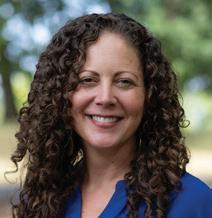
Miranda Boutelle has more than 20 years of experience helping people save energy. She has worked on energyefficiency projects from the Midwest to the West Coast. Today, Miranda is chief operating officer at Efficiency Services Group in Oregon, a cooperatively owned energy-efficiency company.
This content was originally created by Efficiency Services Group LLC under contract with NRECA. NRECA retains ownership of this content. NRECA does not endorse Efficiency Services Group, its views herein expressed, nor any products or services it offers.



It’s no surprise winter months bring increased potential for fire risks and electrical safety hazards. This makes sense because during the coldest months, consumers use additional electrical devices and appliances, such as space heaters, electric blankets and portable generators.
The National Fire Protection Association estimates 47,700 home fires occur each year in the United States due to electrical failure or malfunction. These fires result in 418 deaths, 1,570 injuries and $1.4 billion in property damage annually.


By Abby Berry







This winter, safeguard your loved ones and your home with these electrical safety tips from the Electrical Safety Foundation International.

• Don’t overload outlets. Overloaded outlets are a major cause of residential fires. Avoid using extension cords or multioutlet converters for appliance connections—they should be plugged directly into a wall outlet. If you’re relying heavily on extension cords, you may need additional outlets to address your needs. Contact a qualified electrician to inspect your home and add new outlets.

• Never leave space heaters unattended. Turn off space heaters before leaving the room. Make sure heaters are placed at least 3 feet away from flammable items. It should also be noted that space heaters take a toll on your energy bills. If you’re using them throughout your home, it may be time to upgrade your home heating system. 221100001















• Inspect heating pads and electric blankets. These items cause nearly 500 fires every year. Electric blankets that are more than 10 years old create additional risks for a fire hazard. When you inspect your electric blankets and heating pads, look for dark, charred or frayed spots, and make sure the electrical cord is not damaged. Do not place any items on top of a heating pad or electric blanket, and never fold them when in use.
Required by 39 USC 3685
Filed with the USPS on 9-24-25
LOUISIANA COUNTRY (publication number 473-180) is published bimonthly by the Association of Louisiana Electric Cooperatives Inc., 10725 Airline Highway, Baton Rouge, LA 70816. Six issues are published annually, with a subscription price of $2.79 paid by utility members in their electric bills.
The name and complete mailing address of the publisher is Association of Louisiana Electric Cooperatives Inc., 10725 Airline Highway, Baton Rouge, LA 70816.
The name and complete mailing address of the editor is Conley Bourgeois, 10725 Airline Highway, Baton Rouge, LA 70816.
The owner is the Association of Louisiana Electric Cooperatives. There are no known bondholders or other security holders. ALEC is a nonprofit organization mailing under DMM Section 423.12. Its purpose, function and
purposes has not changed in the preceding 12 months.
The average number of copies of each



• Use portable generators safely. Unfortunately, winter storms can cause prolonged power outages, which means many consumers use portable generators to power their homes. Never connect a standby generator into your home’s electrical system. For portable generators, plug appliances directly into the outlet provided on the generator. Start the generator first, before you plug in appliances. Run it in a wellventilated area outside your home. The carbon monoxide it generates is deadly, so keep it away from your garage, doors, windows and vents. electric it





Purvis, MS - If you experience numbness or tingling in your hands, arms, legs, or feet or if you experience shooting or burning pain, this is important.
Please read this carefully.

Peripheral Neuropathy is when small blood vessels in the hands, arms, feet or legs become diseased and tiny nerves that keep the cells and muscles working properly shrivel up and die.
Early-warning symptoms include tingling and numbness, mild loss of feeling in your hands, arms, legs or feet, inability to feel your feet, which increases your risk of foot-injury and falling.
More Advanced Symptoms Include...
Loss of coordination & dexterity, which puts you at increased risk of accidents.
Inability to feel clothing like socks and gloves.
High risk of falling, which makes walking dangerous, and makes you more dependent on others.
Burning sensations in your arms, legs, hands or feet that may start mild, but as nerves and muscles die, may feel like you're being burned by a blow torch.
Ignore the early warning signals long enough and you risk progressive nerve damage leading to muscle wasting, severe pain, loss of balance and a lot of staying at home wishing you didn't hurt.
When every step is like walking on hot coals, sitting still may be the only thing you feel like doing. But there's little joy in sitting still all day long.
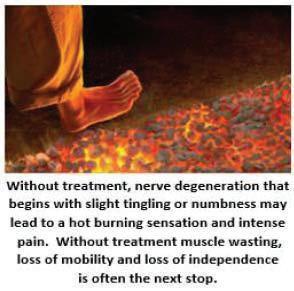
Now here's the scary part....
Nerve damage CAUSES cell damage.
Cell damage SPEEDS UP nerve degeneration
Without treatment this can become a DOWN-WARD SPIRAL that accelerates.
The damage can get worse fast. Mild symptoms intensify. Slight tingling, numbness or lack of feeling can turn into burning pain.
Before you know it, damage can become so bad you hurt all the time.
Unless this downward spiral is stopped and nerves return to proper function - the damage to nerves and cells in the affected area can get so bad your muscles begin to die right along with the nerves and cells. And that sets the stage for weakness, loss of mobility, disability, and dependence on others.
If you have early warning signs of peripheral neuropathy, (tingling &/or numbness, loss of feeling or pain) it's CRITICAL you get proper treatment. It's critical, because with proper treatment the symptoms can often be reversed. Without it, you are playing Russian Roulette with your health.
Once your nerve loss reaches 85%, odds are there's nothing any doctor can do to help.
The most common method your doctor may recommend to treat neuropathy is prescription drugs

Drugs like Gabapentin, Lyrica, Cymbalta, & Neurontin are often prescribed to manage the pain. But, damaged nerves and dying cells do not heal on their own.
Pain pills do not restore healthy nerve function. They just mask the pain as the nerves continue to degenerate and cells and muscle continue to die.
Taking endless drugs and suffering terrible side effects that may damage your liver & kidney and create even more problems, is not a reasonable path. You deserve better.
Three things must be determined to effectively treat neuropathy. 1) What is the underlying cause? 2) How much nerve damage has been sustained? 3) How much treatment your condition will require? With proper treatment, shriveled blood vessels grow back & nerves can return to proper function. How much treatment you may need depends on your condition. At Purvis Chiropractic we do a complete neuropathy sensitivity exam to determine the extent of your nerve damage. The exam includes a detailed sensory evaluation, extensive peripheral vascular testing, & a detailed analysis of the findings.
Dr. Rob Acord, D.C. will be offering this complete neuropathy sensitivity exam for $47. This special offer goes away at the end of this month as we have a limited number of exam appointments available.
Stop Hurting & Start Healing Call Now to Schedule Your Complete Neuropathy Sensitivity Exam with Dr. Rob Acord, D.C. (601) 550-6217





Chef Anne Milneck’s business honors her mom’s delicious legacy
By Cheré Coen
Ask Baton Rouge chef Anne Milneck about her mother, and you can hear the pride in her voice. It’s obvious she considers her mom a cool woman for her day.
Back in the last century, Betty Jo Norsworthy Laiche worked as a home demonstration agent for Louisiana Power & Light, offering cooking demonstrations at the utility’s headquarters and in customers’ homes to help sell appliances. She competed in cooking contests and collected dozens of cookbooks.
When Anne decided to launch a culinary career, she wallpapered her cooking class kitchen with her mother’s recipes and those from her mom’s vast cookbook library. And last year, when Anne was asked to speak at Louisiana State University, she visited the same test kitchen where her mother competed.
“I was in the room where my mother won third place for her pizza,” Anne says.



Anne studied journalism at Louisiana State University and briefly owned The Lunch Lady catering business. But, when her day job interfered with raising children in middle school, she knew she needed a change. Her husband asked her what she really wanted to do. Anne’s answer was culinary school.
At 40, Anne attended the Chef John Folse Culinary Institute at Nicholl’s State, graduating in 2010. She then bought Red Stick Spice, a gourmet grocery store at 660 Jefferson St. in Baton Rouge.
Red Stick Spice sells a variety of spices sourced from around the world. Shoppers may buy any amount, from a teaspoon to a full jar, depending on what they need. The store offers a 10% discount if customers bring in their own jars.
“You can buy as little or as much as you want,” Anne says.
“Stocking up on spices doesn’t make sense if you’re only going to use it once a year.”
Red Stick sells spice blends, specialty salts, olive oils from




















California and other specialty food products.
When you walk in, you’re met with a variety of smells,” Anne says. “It’s overwhelming in the most wonderful way.”
Anne also sells a variety of loose teas, something she had to learn about along the way.
“The only question I could answer 12 years ago about tea was sweet or unsweet,” she says with a laugh, adding that now she’s a certified tea sommelier.
Anne loves to support local artisans and food purveyors, so customers may buy local products such as Primo’s Peppers hot sauce, Dagostino’s pasta and Hanley’s Sensation salad dressing.
Following in Her Mother’s Footsteps
Eight years ago, Anne started teaching cooking classes at the store, offering lessons in specific dishes such as gnocchi, hand-formed pasta, paella, noodles, dumplings and full-meal preparations in cuisines such as Creole and Japanese home cooking. Her kitchen seats about eight to 12 people, and all participants enjoy what they create.
“Everyone takes home a packet of recipes,” she says.
She insists that all dishes taught in her kitchen are easily done at home.
“Our main goal is we want people to cook at home more,” she says, adding that meals savored around her home table are some of the most memorable. “When you cook from home, it’s so much better.”
Like her mother, Anne wants to inspire home chefs, whether they cook on a modern appliance or use air fryers and electric pressure cookers.
1 pie crust
1 stick unsalted butter
3⁄4 cup light corn syrup
1 tablespoon pure vanilla extract
1 teaspoon Chinese five spice blend
1⁄4 teaspoon Szechuan salt
3 large eggs
1 cup chopped roasted pecans
1 cup roasted pecan halves
DIRECTIONS



1 1⁄4 cups packed light brown sugar




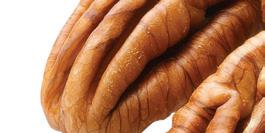





Heat oven to 350 F. Place a baking sheet in the oven to heat.



Melt butter in a small, heavy saucepan over medium heat. Add brown sugar, whisking until smooth. Remove from heat, and whisk in corn syrup, vanilla extract, Chinese five spice and Szechuan salt. Beat eggs in a medium bowl. In the same bowl, stir in the chopped pecans. Combine the two mixtures by tempering the beaten eggs into the hot sugar mixture. Place the pecan halves in pie shell, and pour the filling over them. Place pie dish on hot baking sheet. Bake until filling is set, 50 minutes to 1 hour. Cool to room temperature before slicing. Refrigerate any leftovers.



“We want you to be successful in anything you have,” Anne says. “We’re here for home cooks.”
The following is one of Anne’s favorite recipes using Louisiana pecans, a dessert perfect for this time of year but with a spicy kick. Many of these ingredients may be found at her store.

















When we tested the pie, we were inclined to add more Chinese five spice and Szechuan salt, as the flavors were too subtle. However, after waiting several hours for the pie to cool, the spices really bloomed and came forward.






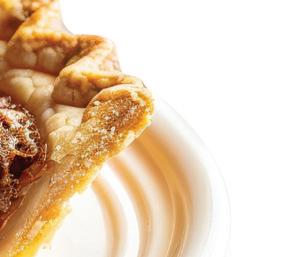

By Cheré Coen
It’s a common dilemma, one that unfortunately plagues society daily. The world’s so big and full of pain, what can one person do?
Rhiannon Menn found the answer in a pan of homemade lasagna.
The need in Rhiannon’s community became painfully clear in 2020 as she witnessed medical workers in San Diego stretched thin and families and individuals isolated inside their homes during the COVID-19 pandemic. California was the first state to shut down, and many residents lost their jobs, leaving some destitute. Rhiannon began making meals she left on doorsteps— a pan of lasagna to feed her neighbors and remind them they weren’t alone.
What she didn’t expect from her simple act of comfort-food kindness is how the neighborhood, then the city, then the world, would react.
Born of the pandemic, organization matches those in need of a meal with a home-cooked
As word spread about Rhiannon’s lasagnas, others reached out, asking to join the effort. A network soon came together to match those in need with home chefs wanting to cook. No one asked questions or required information from those seeking help. They just offered support within a home-cooked meal.
“It started to grow like firecrackers,” says Andria R. Larson, executive director of Lasagna Love, the nonprofit that grew out of Rhiannon’s original delivery. “We were able to bring people together through nourishment.”
As word got out in late 2020, Rhiannon and Andria had to develop spreadsheets to keep up with the demand. A volunteer from the Massachusetts Institute of Technology helped develop their website.
“We were just random acts of kindness that came together,” Andria says. “And the ripple effect keeps going. We’re now in four countries and all 50 states.”


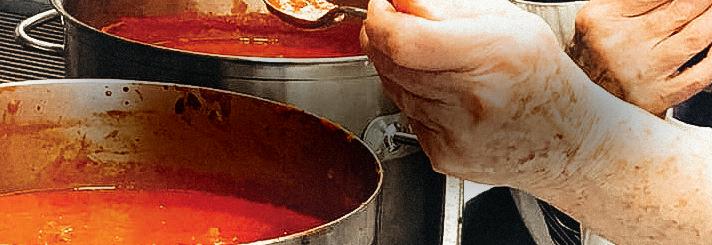



Lasagna Love’s mission is simple: address food insecurity in an oldfashioned way, with a home-cooked dish. Those in need—people who have lost their job or housing, families struggling to make ends meet or even college students away from home longing for a home-cooked meal—can register on Lasagna Love’s website. The main office sends on the information to local leaders throughout the United States, Canada, Australia and the United Kingdom, who match them with home chefs. The lasagna chefs are volunteers—as are 99% of the organization’s members. The chefs buy the ingredients, prepare the lasagnas and deliver the meals to recipients with notes of encouragement.
Not everyone who volunteers with Lasagna Love cooks. Some donate money and ingredients, while others provide administrative help.


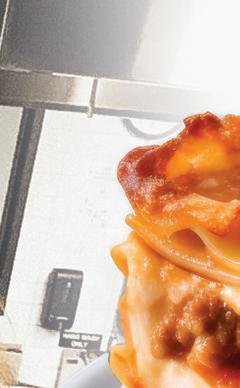










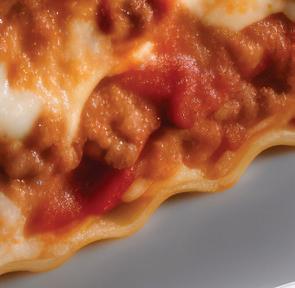




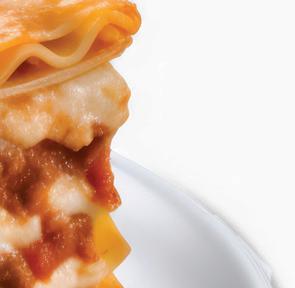



“Some love to cook, some want to donate their skill set,” Andria says. “They are all part of the larger mission.”
To date, more than 23 million people have been affected by Lasagna Love, with more than 80,000 volunteers serving up assistance in one capacity or another. Lasagna Love ambassadors deliver, on average, 3,500 lasagnas each week.
“Radical kindness and generosity continues to spread,” Andria says. “What better way to do that than a pan of homemade lasagna?”
Andria insists that even those who have difficulty in the kitchen can create a pan of lasagna.
“It’s really not that complicated,” she says. “It’s meat, sauce, noodles, cheese, and repeat.”
main ingredient is always a desire to help.
“Through all of it, kindness continues to be needed and woven back into our community,” Andria says. “No one should be without food, but we find many in need.”
Home chefs may be individuals, families or groups, but the primary contact must be at least 18 years old.
In Tennessee, state director Melanie Johnson finds many groups wanting to
community service goals with earning a Lasagna Love Patch. To receive a patch, Scouts explore how to initiate positive change in their neighborhoods, engage in activities that match the core values of Lasagna Love and explore the challenges individuals face today, such as food insecurity. Participating troops help address local waitlists by preparing and delivering meals “while learning invaluable skills and fostering a spirit of
Radical kindness and generosity continues to spread. What better way to do that than a pan of homemade lasagna?
Some recipe tweaks are necessary if recipients have dietary restrictions. For instance, some noodles might need to be gluten free, and vegetarians may request a meatless dish. Many chefs incorporate family recipes, so recipients receive a meal that’s been beloved for generations. Some chefs may use recipes from the main office, along with a tutorial on how to put the pieces together.
No matter which recipe is used, the



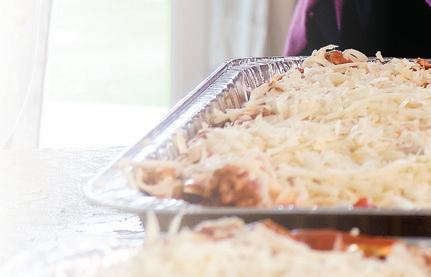



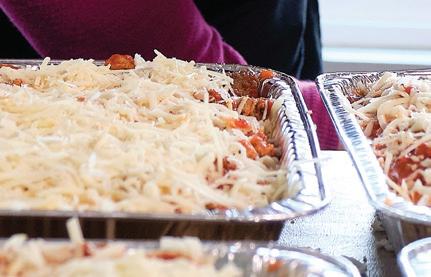
— Andria R. Larson, executive director of Lasagna Love
serve lasagna weekly across the state. She continually works with church groups, parents homeschooling their children and those looking for community service hours. Members of a ladies group in Clarksville deliver their lasagnas once a quarter. She’s even had a yoga class volunteer.
“It’s a great group activity,” Melanie says. “For families, it’s a great opportunity to involve kids at different age levels.”
Lasagna Love recently partnered with the Girl Scouts to marry the Scouts’


altruism,” according to the organization.
Andria agrees that creating and delivering lasagna is “passion work” and fosters the idea of a village mentality when society’s support systems fail or are not in place. She insists volunteers receive just as much emotional support as the recipients.
“It’s an emotional connection that you can’t duplicate,” she says of cooking and delivering the meals. “This is definitely more than lasagna.”


























For recipients, it’s as easy as signing up on the Lasagna Love website. There are no hoops to jump through, no paperwork to determine need. No fee is required, and privacy is paramount. Deliveries are contact-free to the doorstep unless the recipient requests otherwise. Recipients set the time, date and place of the delivery, and the process crosses all language and cultural barriers.
Sometimes, it’s not the lack of finances that brings people to Lasagna Love. It may be someone in need of emotional sustenance.
“Most people have a need, but sometimes it’s a harried parent who’s working and tired of bringing home fast food,” says Brenda Walkenhorst, local leader for the New Orleans metropolitan area. “You don’t have to show reason.”
For some, it’s the first time they have asked for help. The lack of bureaucracy eases their anxiety, Andria says.
“We want to make the experience easy,” she says. “There’s no judgment, no qualifications. Hard times can happen anytime. We don’t want people to face it alone. We’re here.”
Lasagna Love is always in need of volunteers—and not just those who love to cook. The organization accepts donations, and sponsors may be called on to do everything from helping in the organization’s administration to providing ingredients to chefs each month.
“It’s a way for people to get involved without cooking,” Andria says.

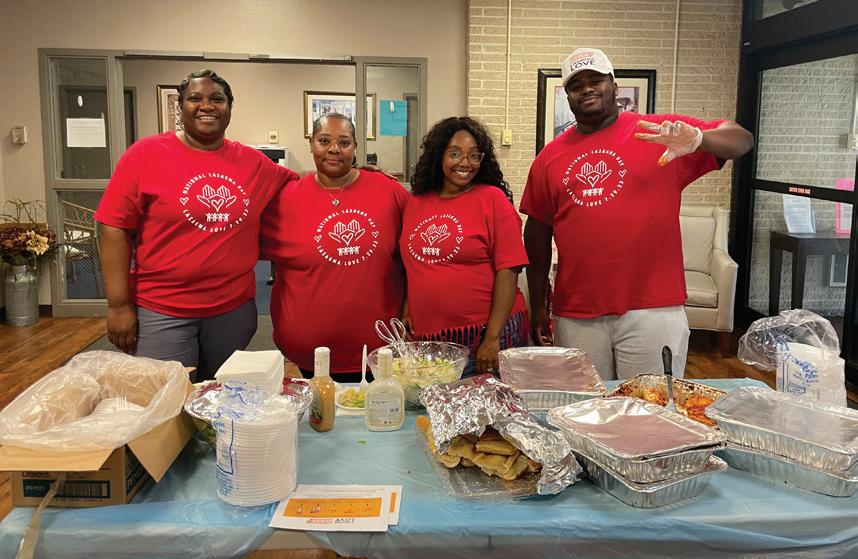
Volunteers may cook as many or as few lasagnas as they’re able, as individual volunteers or as a group activity. Many volunteers use the opportunity to create lasagna with family members, church groups and other organizations. They sometimes add their own styles to the pan.
Those who wish to cook must complete a brief online training course on safe food preparation and share how often they wish to take part. Volunteers may participate as much or as little as they are able.
The ripple effect Rhiannon and Andria started in 2020 remains, Andria says, and the organization continues to grow thanks to the steady stream of volunteers. This year, Lasagna Love began spreading kindness in the United Kingdom.
“One of the things I did not expect from a group of five women to the state we are in now was being able to see how many people generally want to help,” she says. “It really is impressive to see.” n
For more information about Lasagna Love, visit lasagnalove.org.
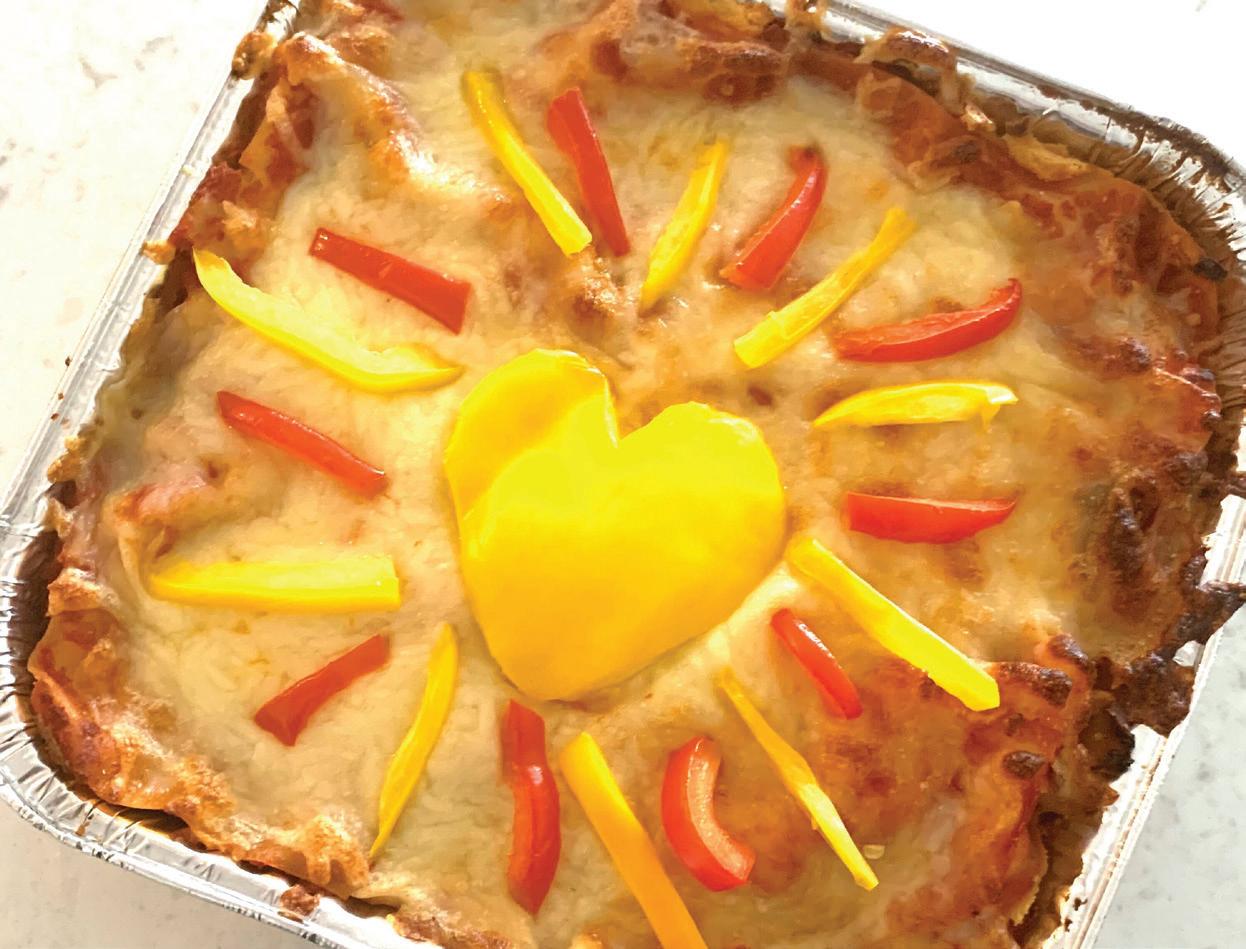
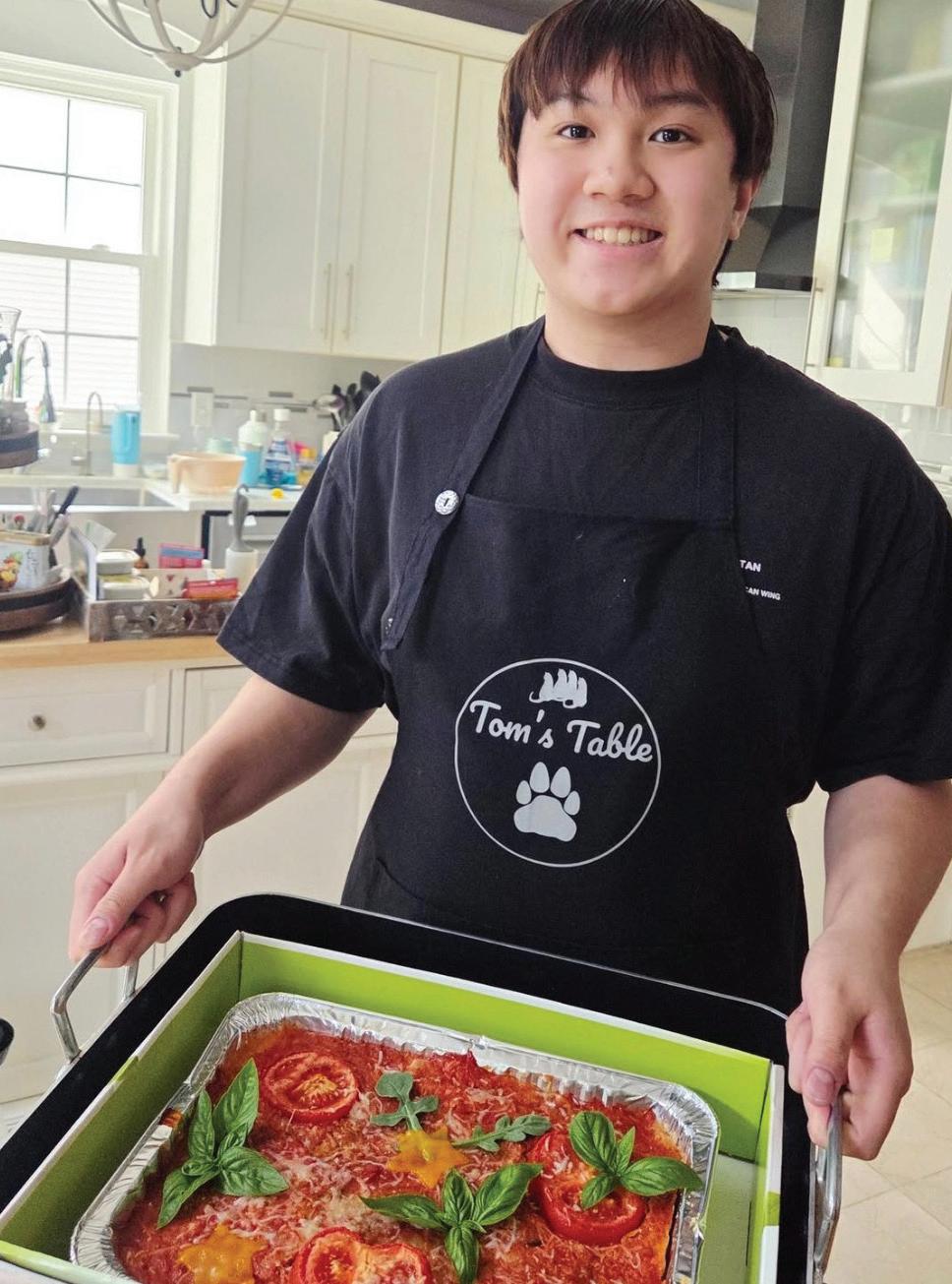

Messages of hope are delivered with each pan of lasagna.




Cooking for others is part of Brenda Walkenhorst’s DNA. As a former education director at the Audubon Zoo, she incorporated regional dishes into her job, making meals that highlighted the animals’ countries of origin. She loved cooking so much that she began teaching Louisiana dishes at a culinary school in the French Quarter.
But then the COVID-19 pandemic hit, and she was out of work. She was also despondent as she witnessed food insecurity throughout New Orleans during the pandemic.
“I thought, ‘What can I do to help?’” Brenda says. “Cooking is my thing.”
An opportunity presented itself when she saw a segment about Lasagna Love on television.
“I thought, ‘This is perfect because cooking to me is therapy,’” Brenda says. “In New Orleans, where everyone always goes out to eat, sharing a meal with people is really important. And lasagna is






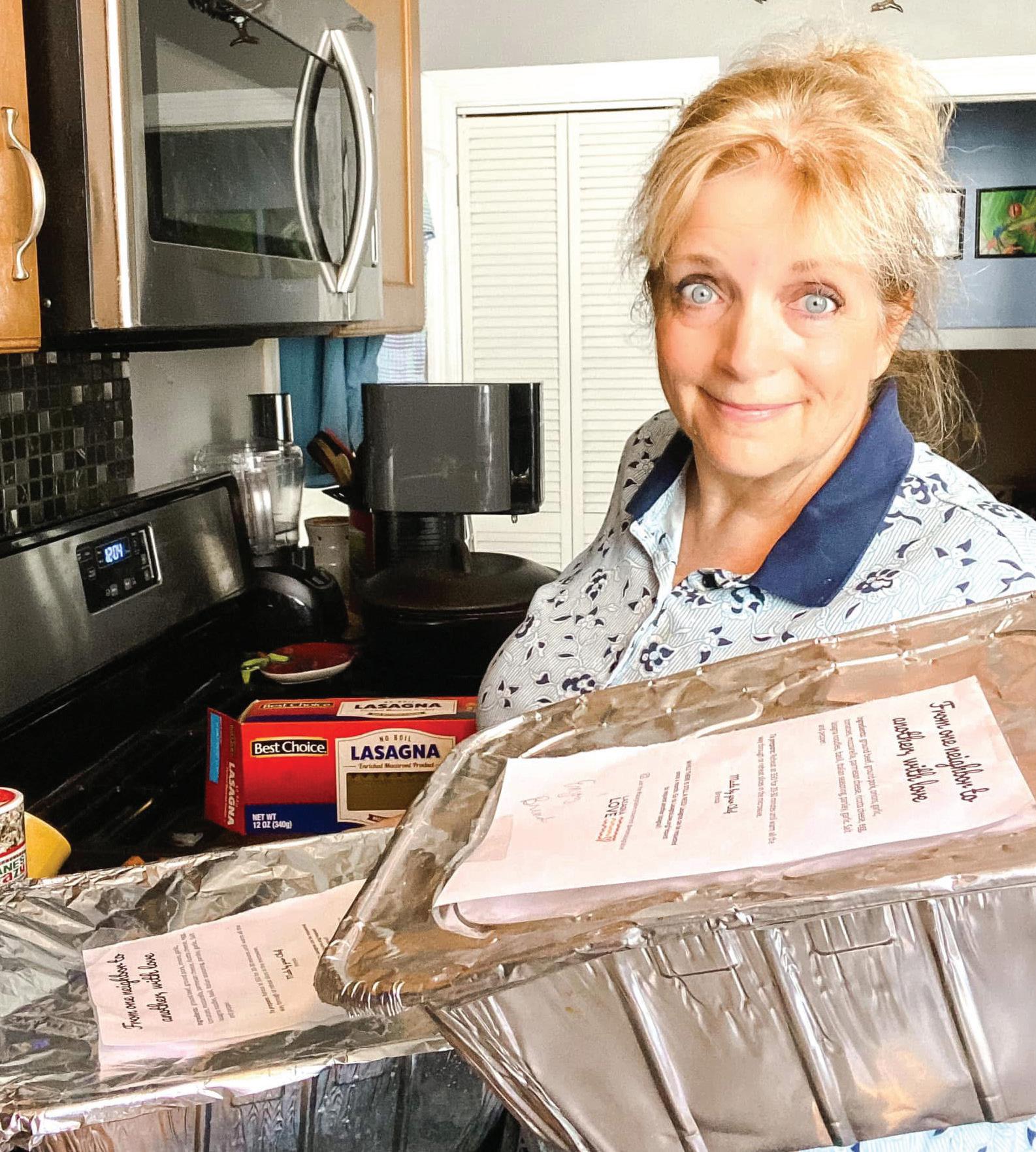








the ultimate comfort food.”





Brenda is now Lasagna Love’s local leader of the New Orleans metropolitan area, which covers the city and reaches down the bayou toward Houma and Thibodaux. Her volunteer job suits her well since Brenda’s home includes an extra kitchen to cook her lasagna. And sourdough.
The Wisconsin native who’s made Louisiana her home for more than two decades also bakes sourdough loaves that she leaves inside her Little Free Bakery in front of her house.
“My kitchen these days is a lot of lasagna and a lot of sourdough,” she says with a laugh.
What Brenda loves most about Lasagna Love is that recipients do not need a reason to ask for help, and a delivery of a homecooked meal comes without requirements, fees or even contact unless the recipient indicates it would be welcomed.










“It depends on each person,” Brenda says about chefs meeting recipients.
Most chefs and recipients, however, wish to remain anonymous, she says.
In New Orleans, like many cities in the Deep South, a significant portion of the population struggles with food insecurity. Brenda’s list of those in need is much longer than her 12 volunteer chefs can handle at any one time. She needs donors and volunteers.
“I could use double or triple the amount of chefs I have,” she says.
The amount of time volunteers devote to Lasagna Love is entirely up to the individual, she says. Chefs can cook on their own time and deliver every week or only once in a while.
“As a chef, we can really make it work for you,” she says. n
For those interested in becoming a home chef, or to volunteer money or time in other areas of the organization, visit lasagnalove.org.



















• Rate schedule is based on your current age and is guaranteed for the life of the policy.
• Monthly rates as low as $3.49.
• Coverage is also available for your spouse and other family members.
• Benefits will NEVER be canceled or reduced for the life of the policy if premiums are paid on time.
Policy Form #SRTCV/SRTCV R13 or R17, or #SRTCV90MA in MA

















• Rates are based on your children’s or grandchildren’s present age and never increase for any reason.
• Monthly rates as low as $2.17.
• Benefits will NEVER be reduced or canceled if premiums are paid on time.
• Give your children a financial head start right now. Your policy builds CASH VALUE for your family’s needs.
or GWLA001


























































South Louisiana Electric Cooperative Association recognized 14 employees for their dedicated years and professional service to SLECA members.


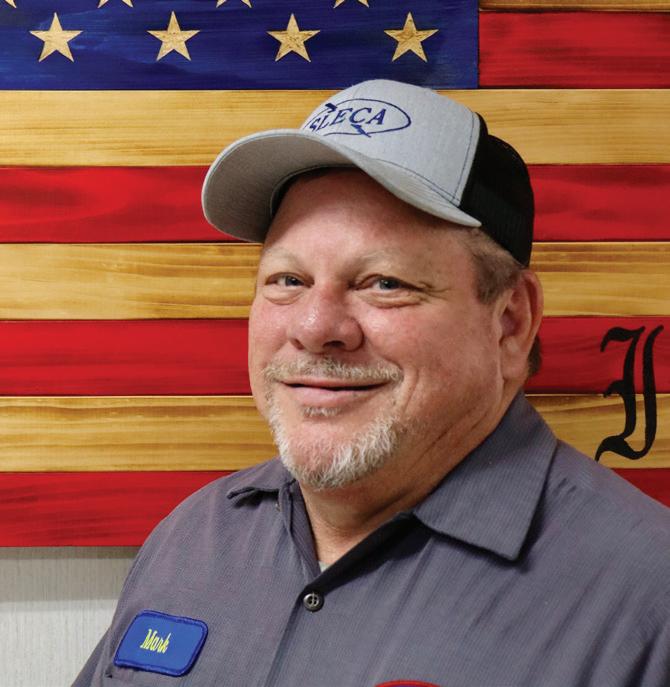
Our valued employees are responsible for maintaining more than 1,400 miles of electric power lines and poles serving Assumption, Lafourche, St. Martin,



St. Mary and Terrebonne parishes. Congratulations to all, and thank you for keeping the lights on. n





















$5 Gold American Eagles at COST! It's that simple. These Government issued coins are the easiest and safest way to protect your money and your family! A 5 minute call can change everything. DON'T WAIT!












SLECA employees and the board of directors wish everyone a wonderful holiday
BOARD OF DIRECTORS

OPERATIONS

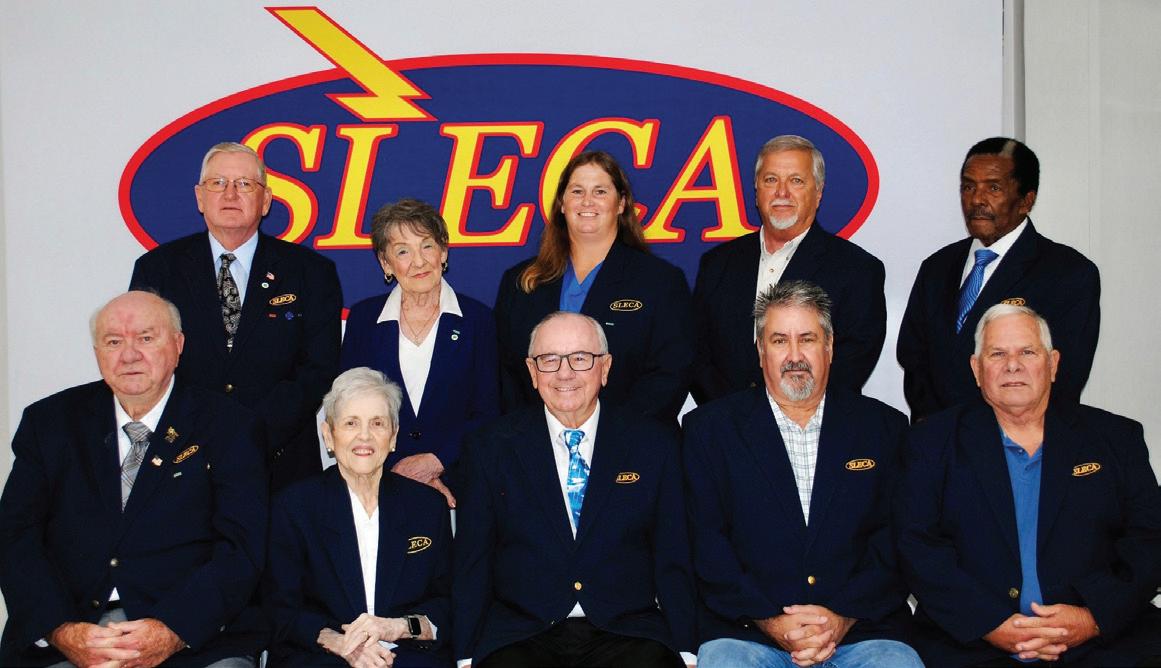



GENERAL MANAGER AND EXECUTIVE TEAM




ENGINEERING


ADOBE STOCK IMAGE BY FORTYFORKS
MEMBER SERVICES

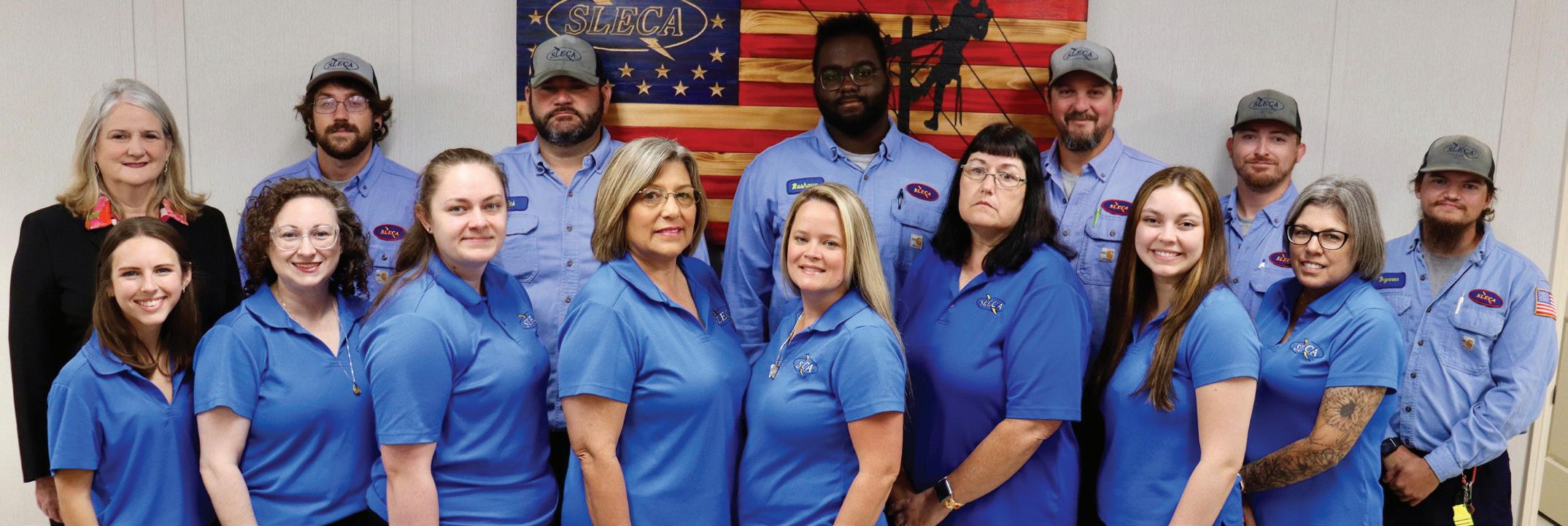
PURCHASING


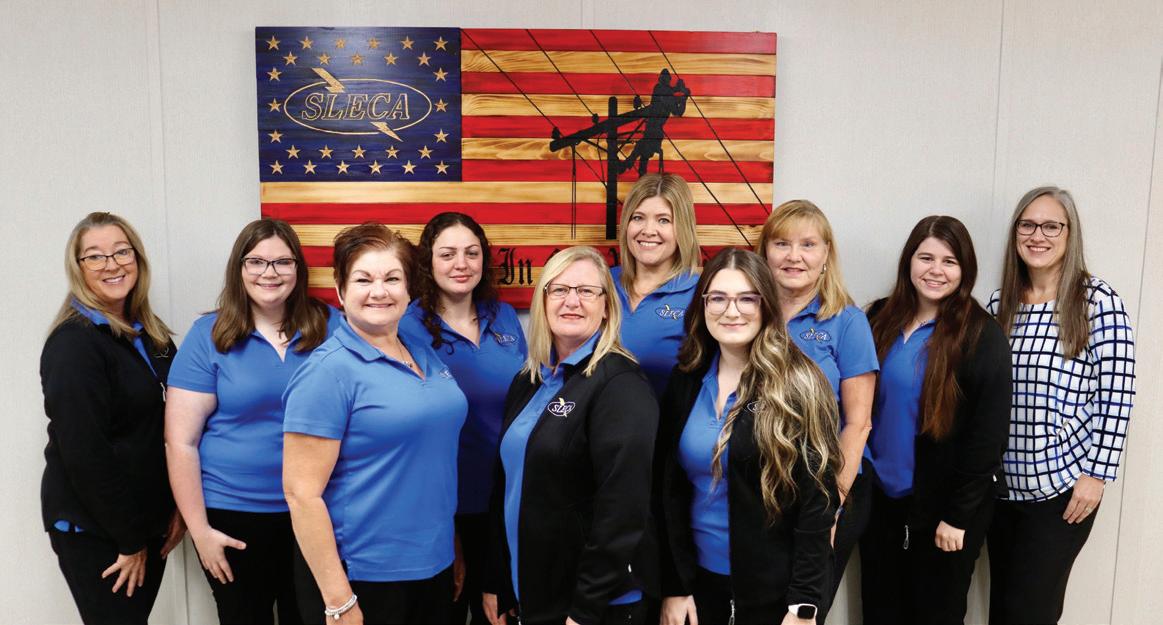

By Christina Sawyer
The holiday season often means travel— whether it’s visiting family, enjoying a winter vacation or escaping the cold altogether. But while you’re away, your home is still working to maintain comfortable temperatures, which leads to wasted energy and a higher utility bill. Managing the heating system in an empty house can be tricky, especially when outside temperatures drop and fluctuate. So, what’s the best approach for saving energy while ensuring your home is safe and protected during your absence?
It might seem counterintuitive, but your heating system can work harder to maintain the temperature in an empty house than it does when it’s full of people. You may think that leaving your home unoccupied would lower your energy use, but that’s not always the case. Some homeowners are surprised to see higher heating bills during periods when their homes were unoccupied.
Each person inside naturally contributes warmth to the environment. This, combined with the heat from household activities like cooking, showering and even using electronics, helps keep the overall temperature up. When you’re away, all of these small but significant heat sources are gone.
Without the added warmth from people and activities, your heating system has to work harder to maintain a set temperature—especially in regions like ours, where winter temperatures vary from day to day.
Winter weather plays a huge role in how often your heating system kicks on while you’re away. In climates like ours, freezing temperatures can quickly cause your house to lose heat, even if it’s wellinsulated. This means your heating system has to work harder and cycle on more frequently to keep the interior at the set temperature.
If you have a programmable or smart thermostat, consider creating an “away” schedule that lowers the temperature a few degrees. Experts recommend setting the thermostat between 50 and 60 degrees to prevent frozen pipes without overworking the heating system. Keeping the thermostat set at a lower temperature allows your home to stay safe while still saving energy.
Some smart thermostats let you monitor and adjust your home’s temperature remotely. If the weather suddenly takes a turn for the worse, you can bump up the heat slightly from wherever you are, helping prevent frozen pipes or other coldweather damage.
While the heating system is one of a home’s biggest energy users, don’t forget about other power drainers that quietly suck up electricity while you’re away. Many electronics—such as TVs, gaming consoles and kitchen appliances—consume energy when plugged in, even if they’re turned off. Known as standby power or phantom load, this can account for up to 10% of your home’s total energy consumption.
Before heading out, make sure to unplug devices you won’t be using. Chargers, electronics and small appliances such as coffee makers are some of the most
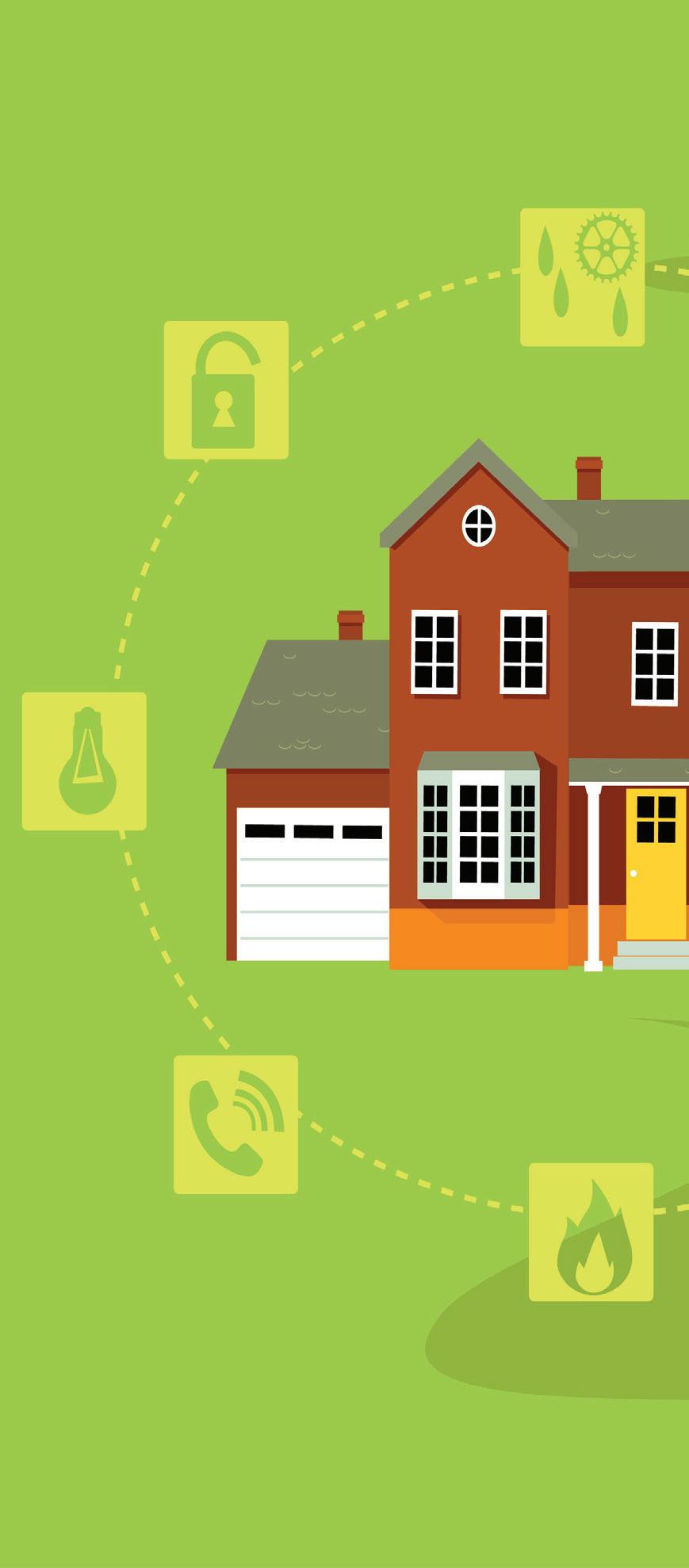
common culprits. If you have holiday lights or other seasonal decorations set up, consider using timers so they aren’t running 24/7 while you’re not there to enjoy them.
Your water heater keeps working while you’re away, potentially wasting energy heating water you won’t use. Newer models often have a “vacation mode” that reduces the water temperature while still protecting the system from freezing.
If your water heater doesn’t have this feature, simply lowering the temperature setting can help cut down on energy costs.

Lower the thermostat: Set your thermostat five to 10 degrees lower than usual, or use an “away” setting if you have a smart thermostat.
Unplug unused devices: Electronics, chargers and kitchen appliances can consume energy even when off. Unplug them before you leave.
Set holiday lights on timers: Use timers for holiday decorations to limit energy use while still enjoying the festive glow when needed.

If you have a programmable thermostat, it’s easy to remotely adjust your home’s temperature before returning. If you don’t, there are still ways to manage the process efficiently when you walk through the door.
When you return home from your holiday adventures, it’s tempting to blast the heat right away to get comfortable.
Instead, slowly increasing your home’s temperature can help your heater work
efficiently, rather than maxing out while speeding to a high heat.
Taking small steps to conserve energy—before you leave and after you return—can help protect your home and your wallet during the cold months. No matter where your holiday travels take you, knowing that your home is well prepared will give you peace of mind. And when you return to a warm, cozy home, you’ll be grateful you took the time to manage your energy use.



Use vacation mode on appliances: Newer water heaters and some other appliances have a vacation mode—activate it to save energy.

Insulate your home: Double-check windows and doors are properly sealed to prevent cold air from seeping in and overworking your heating system.






















